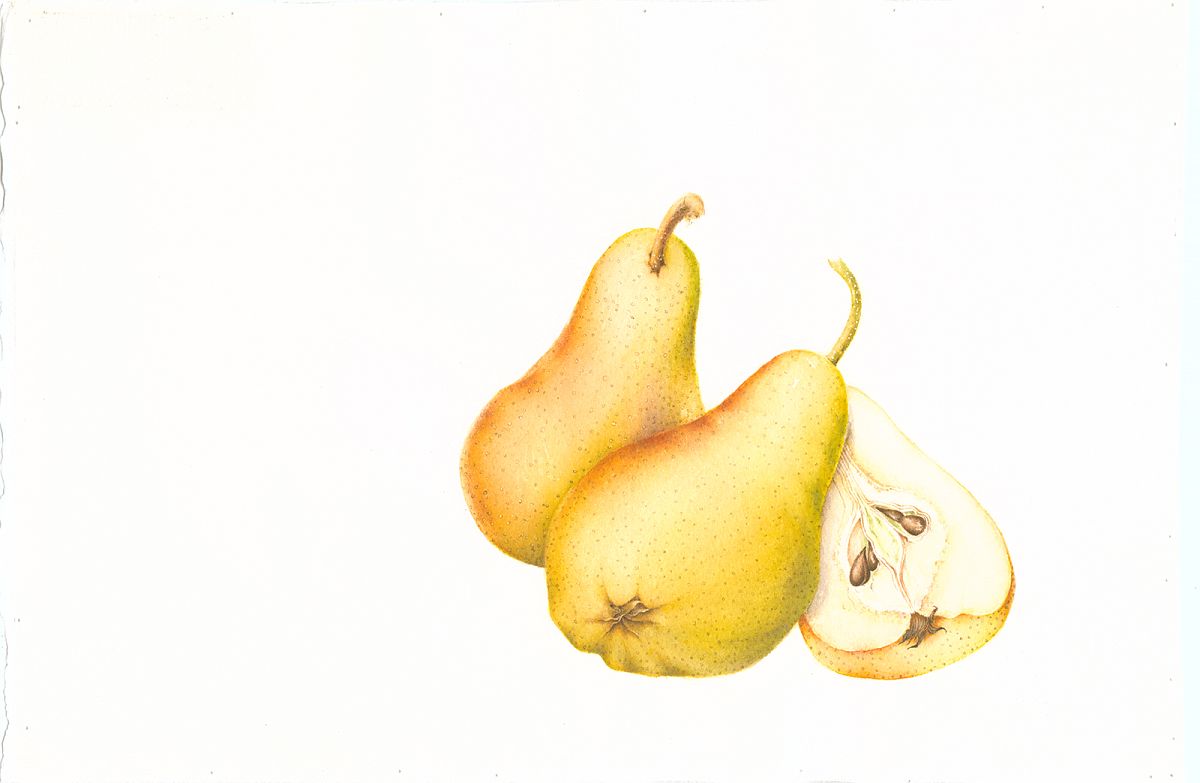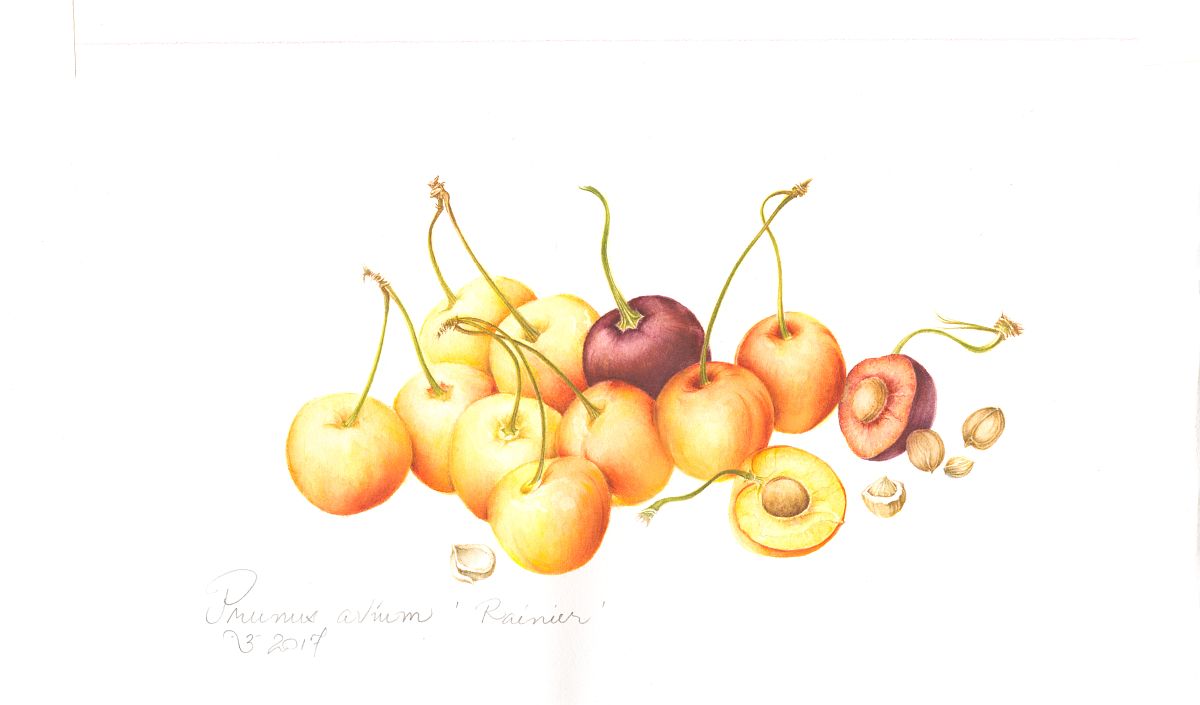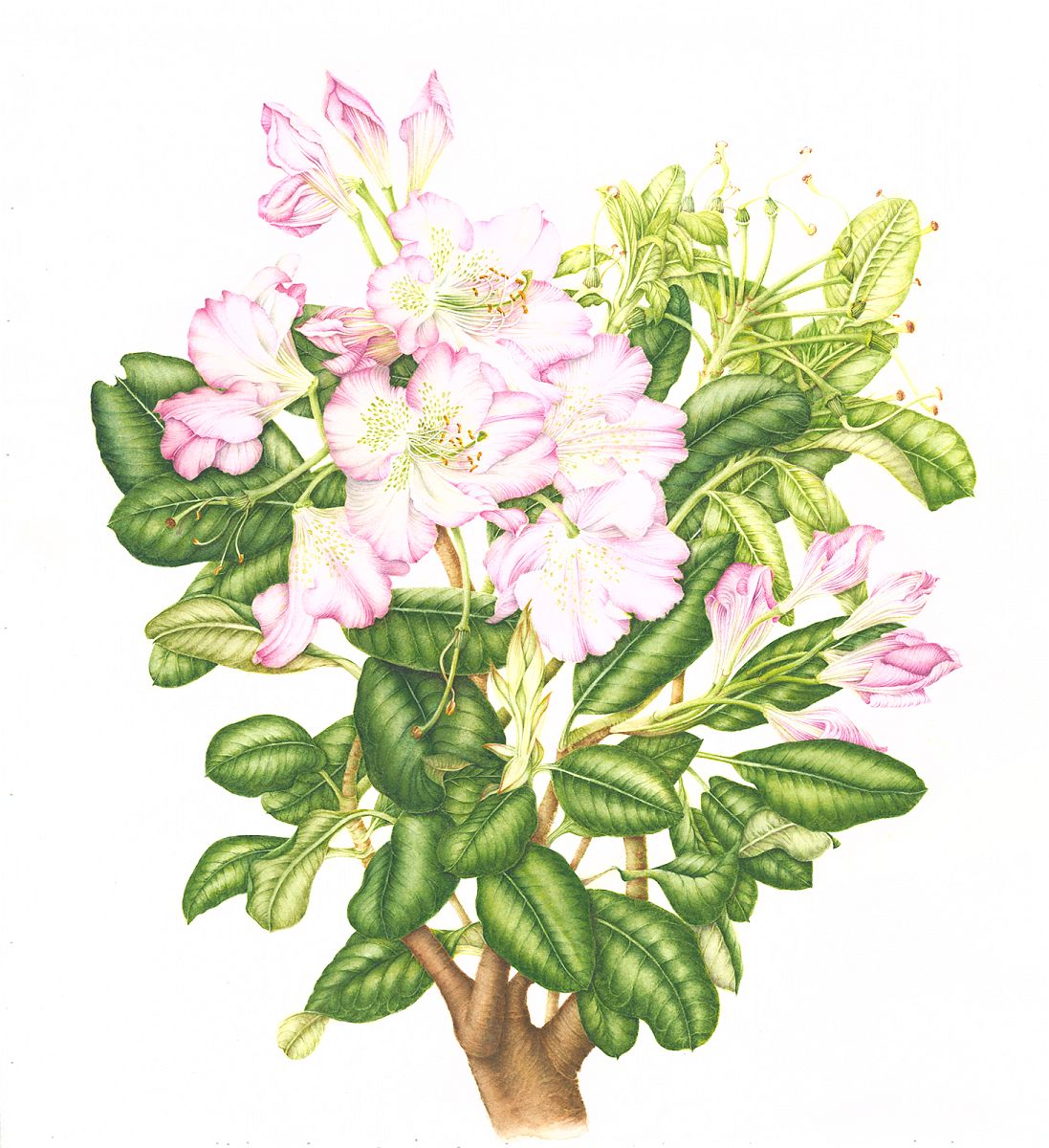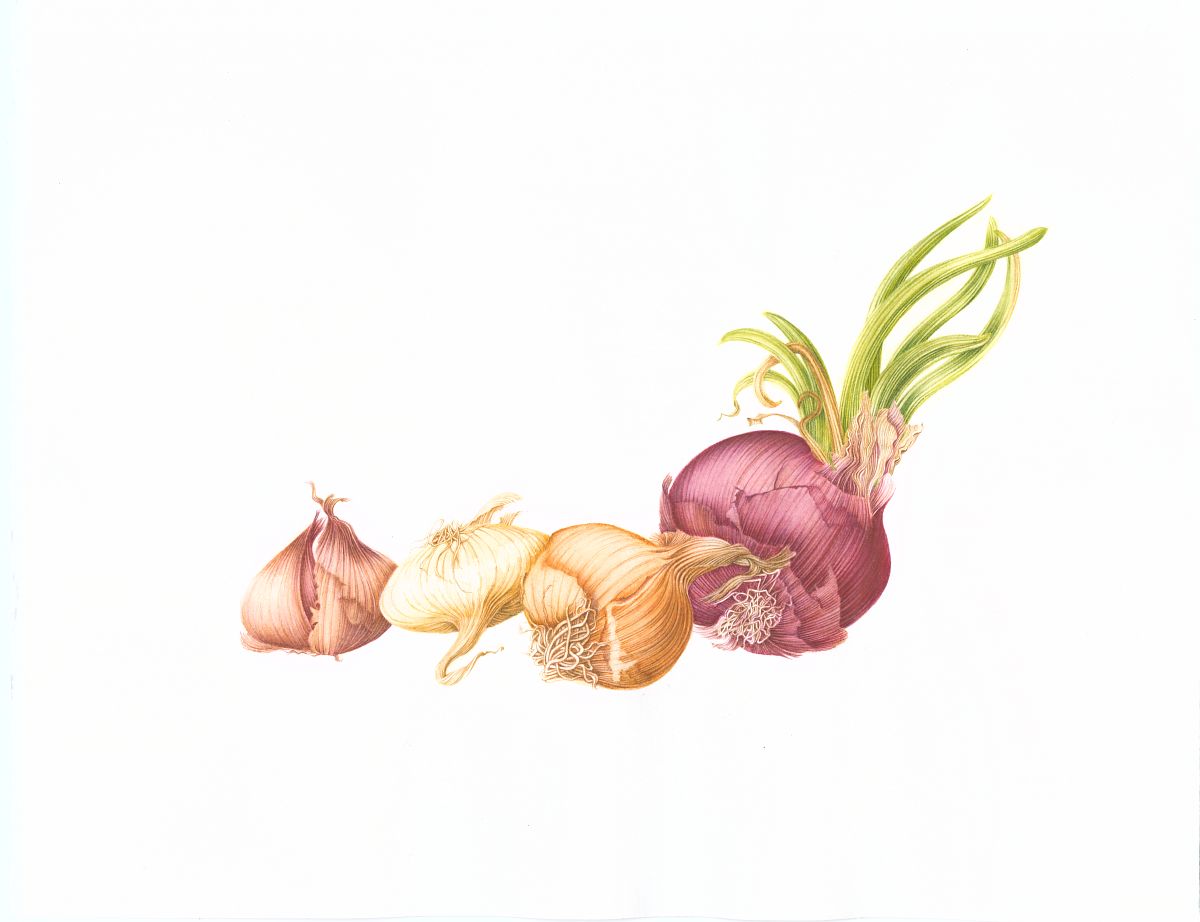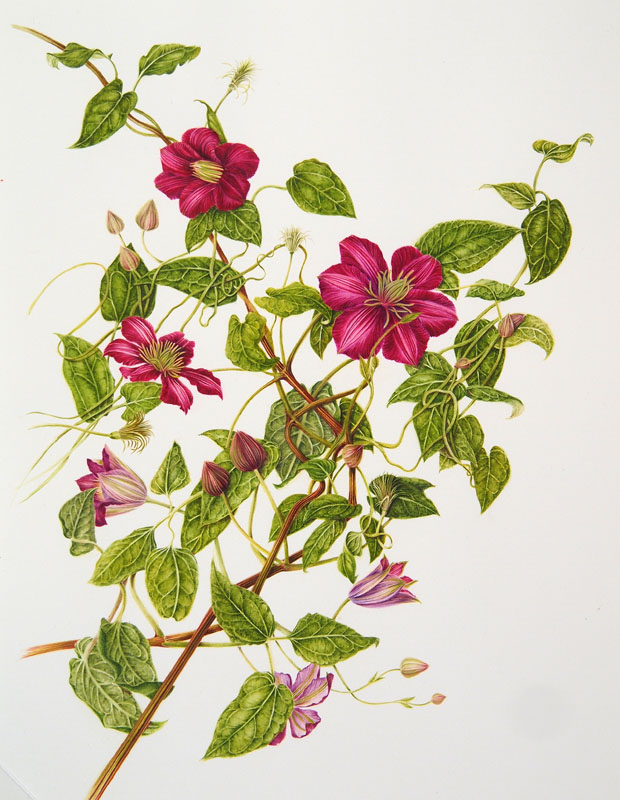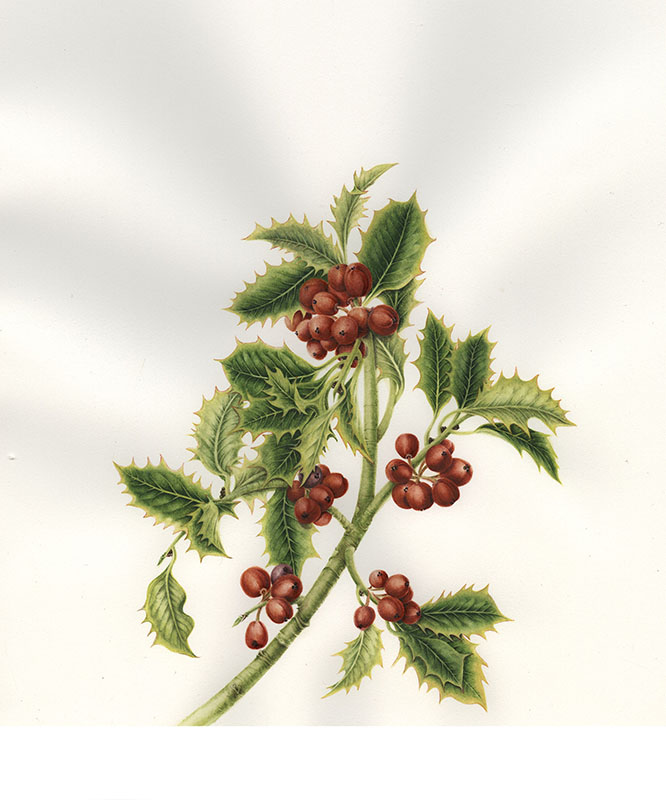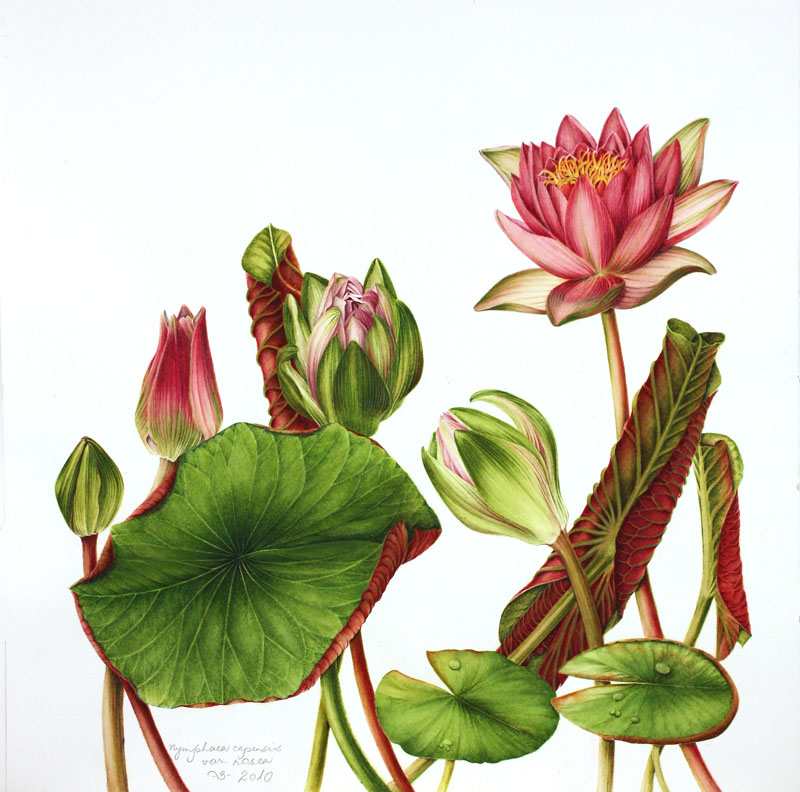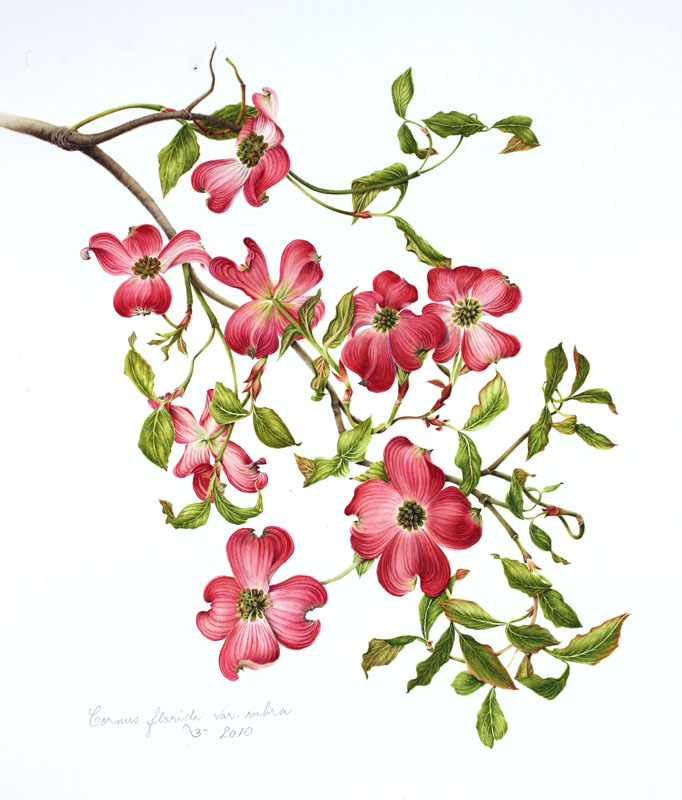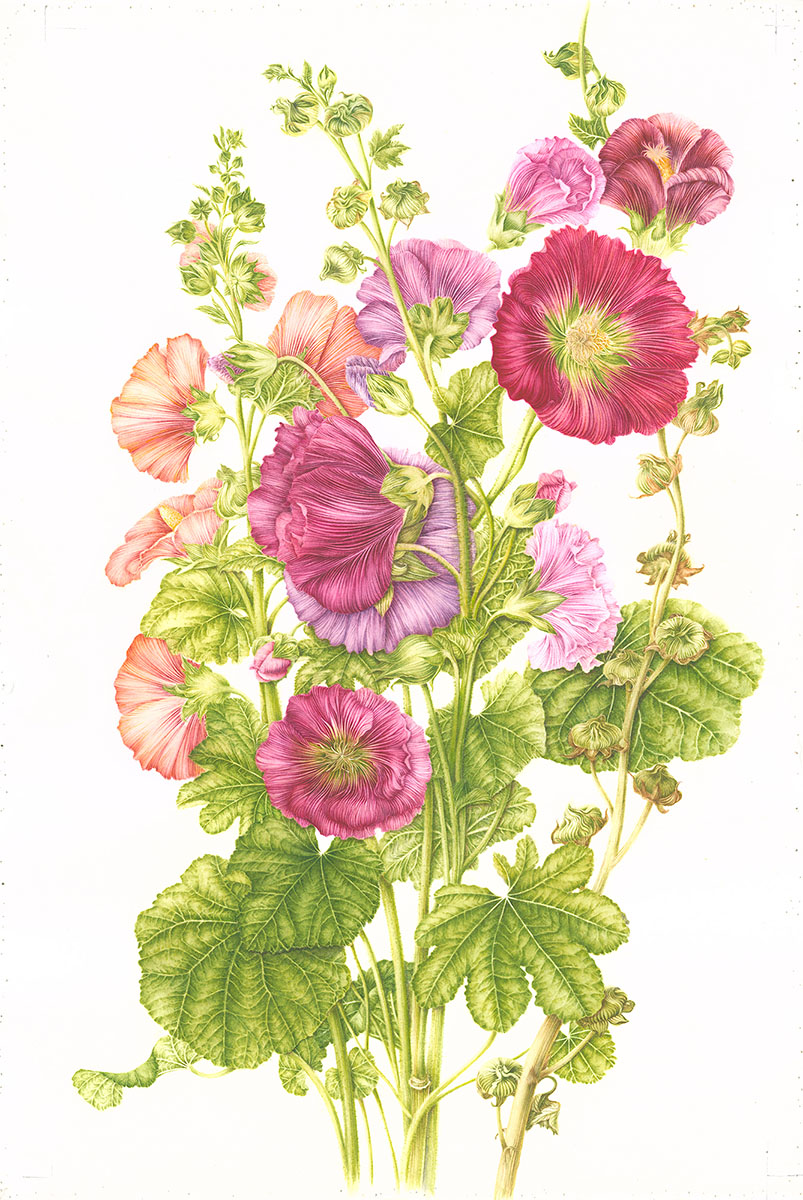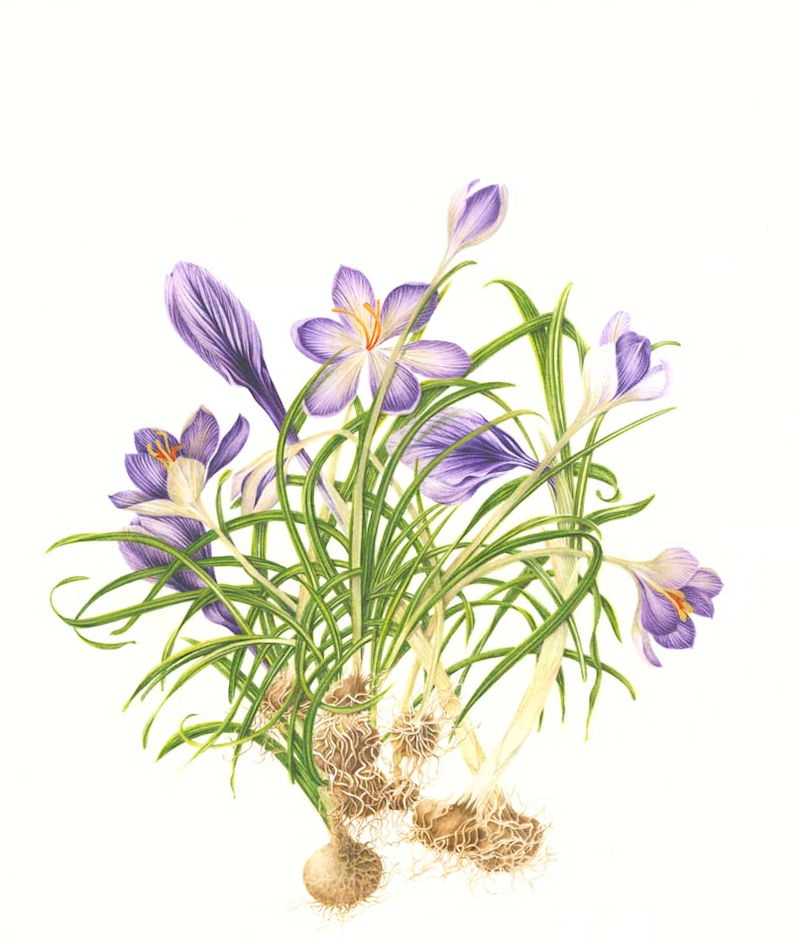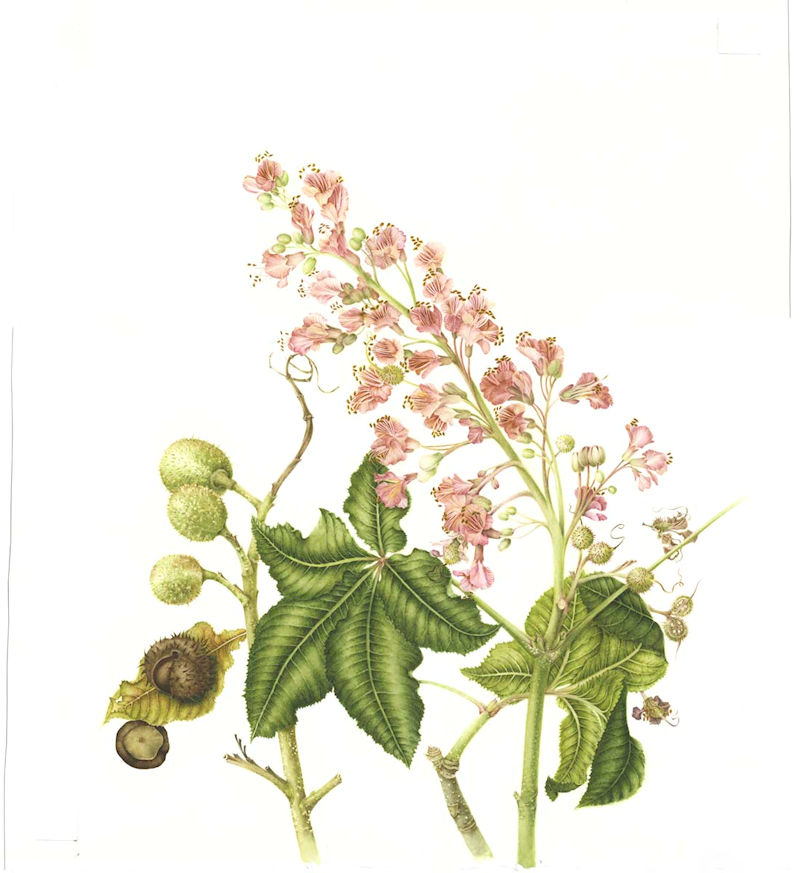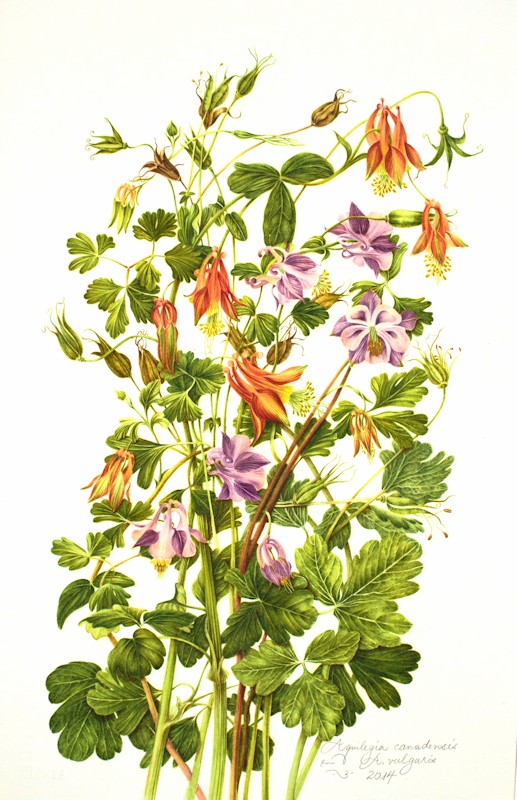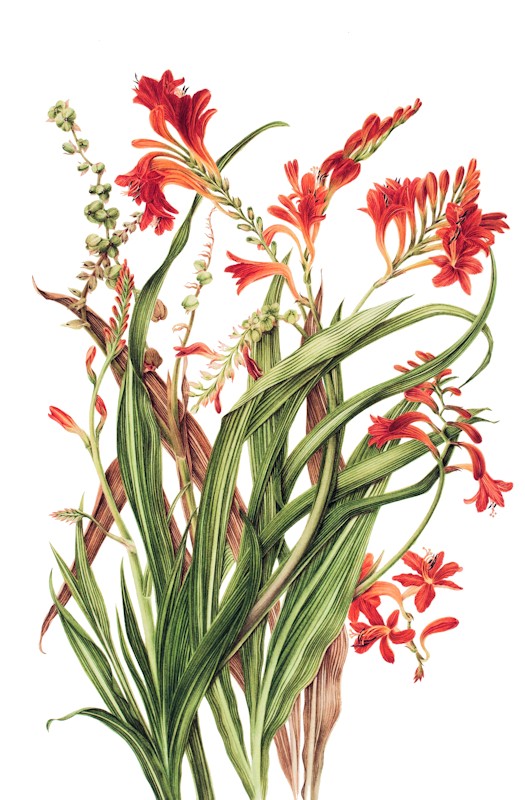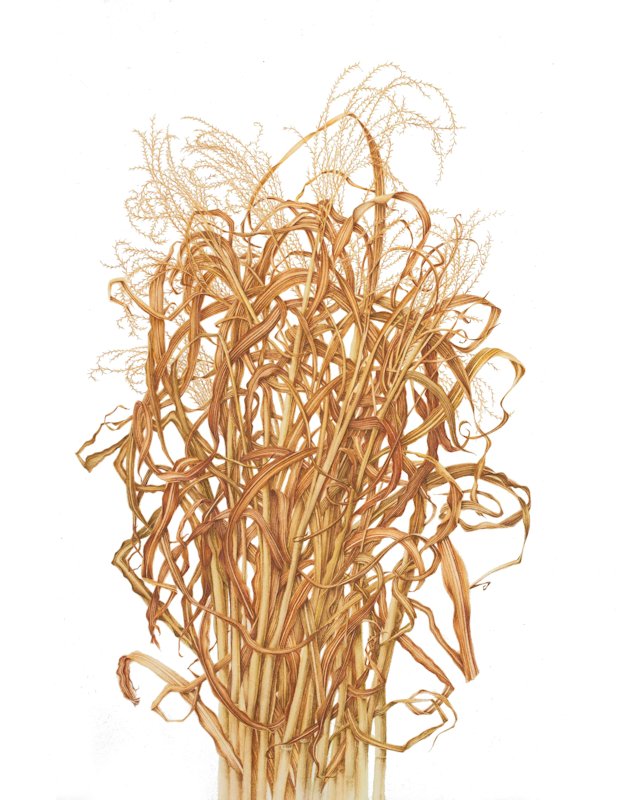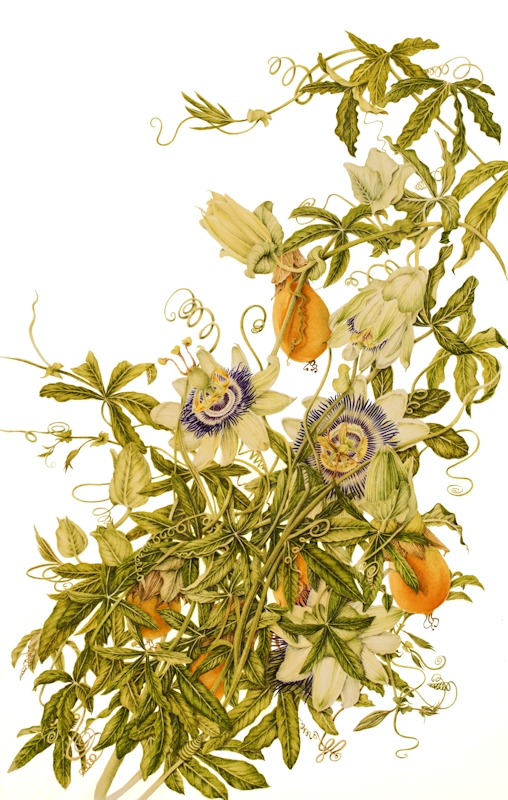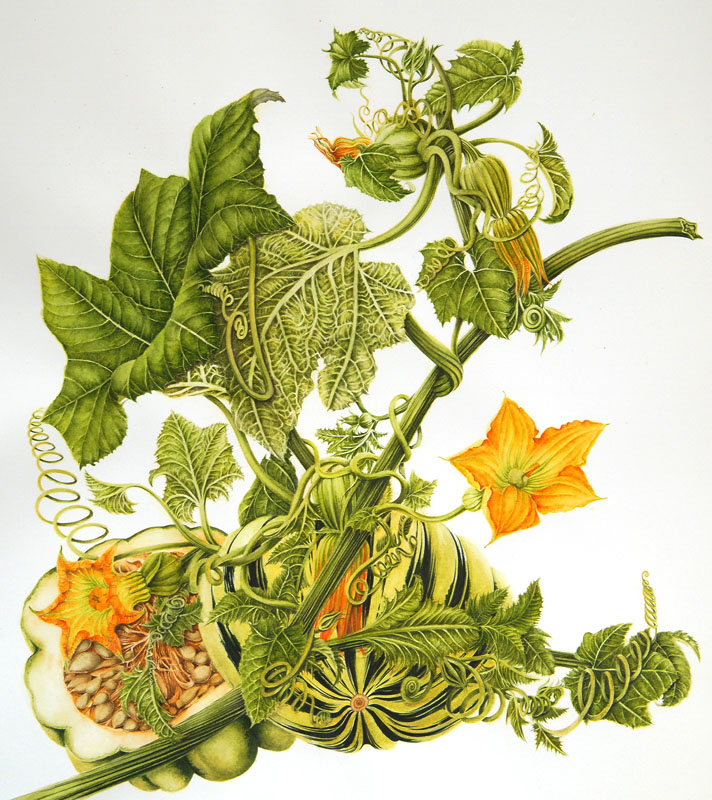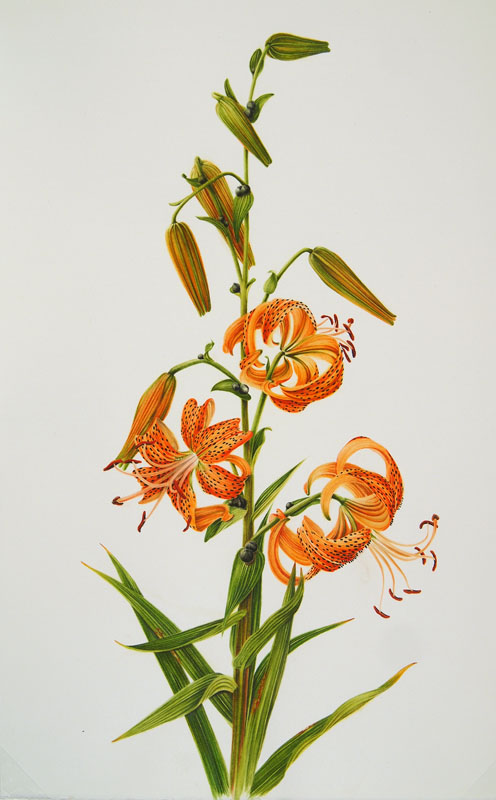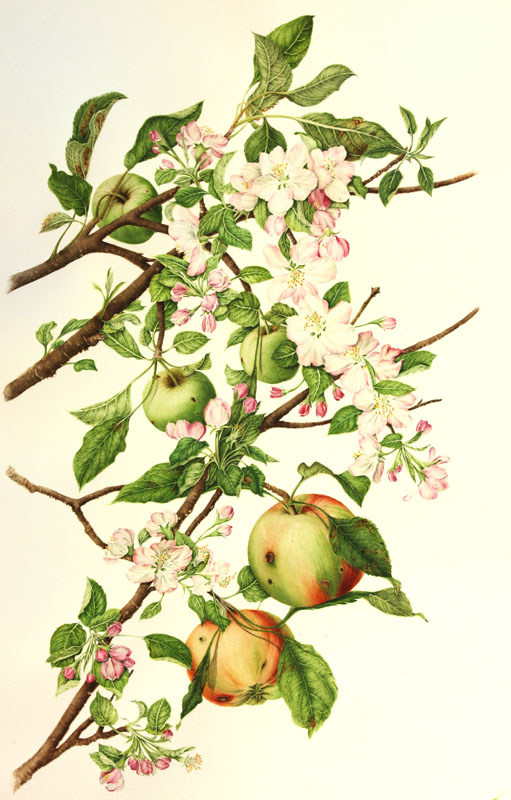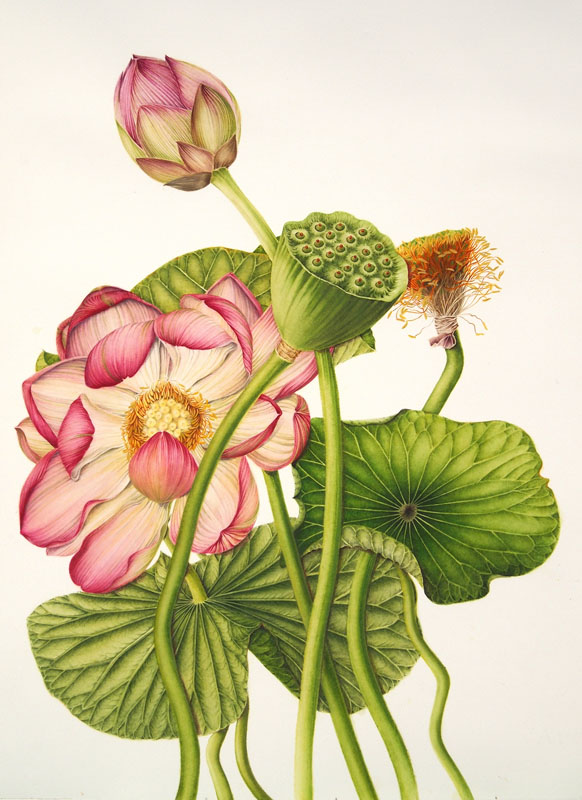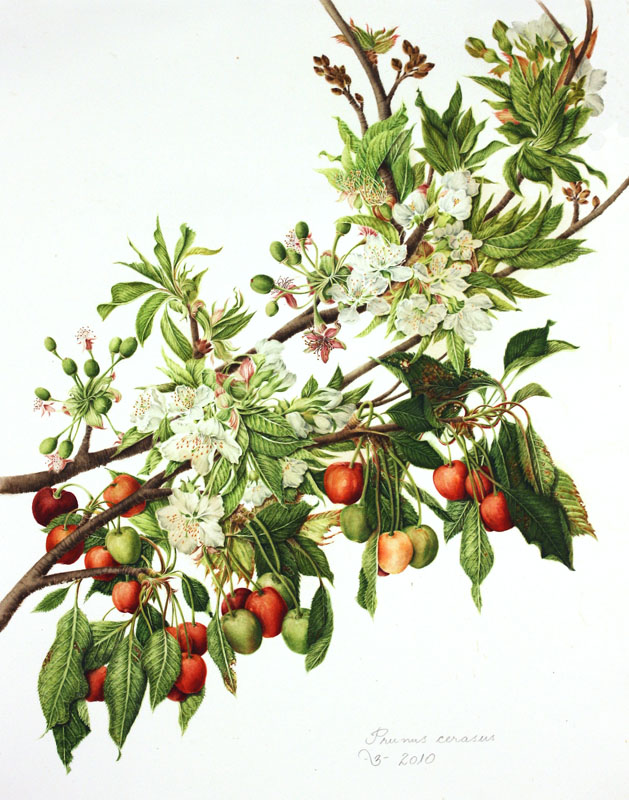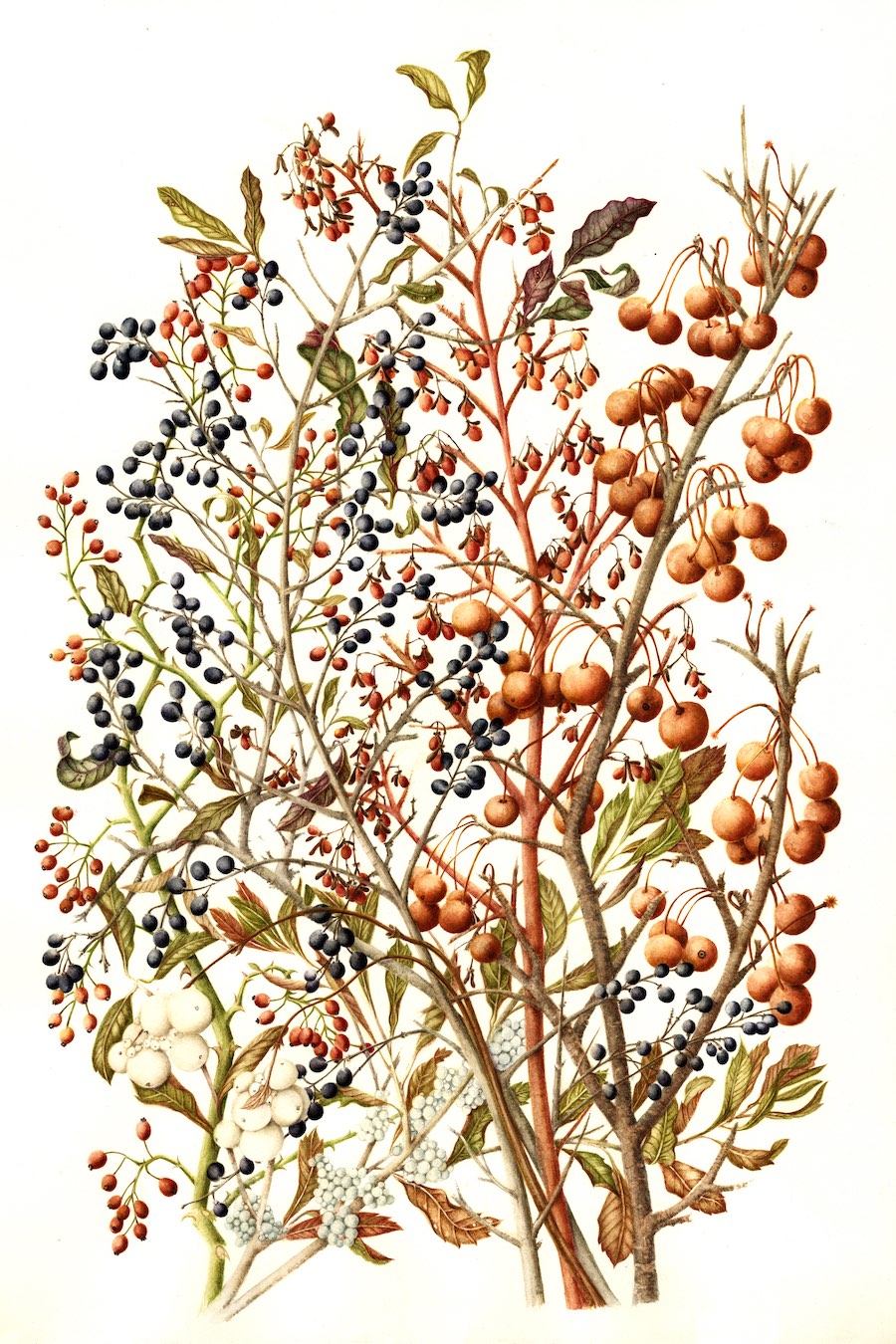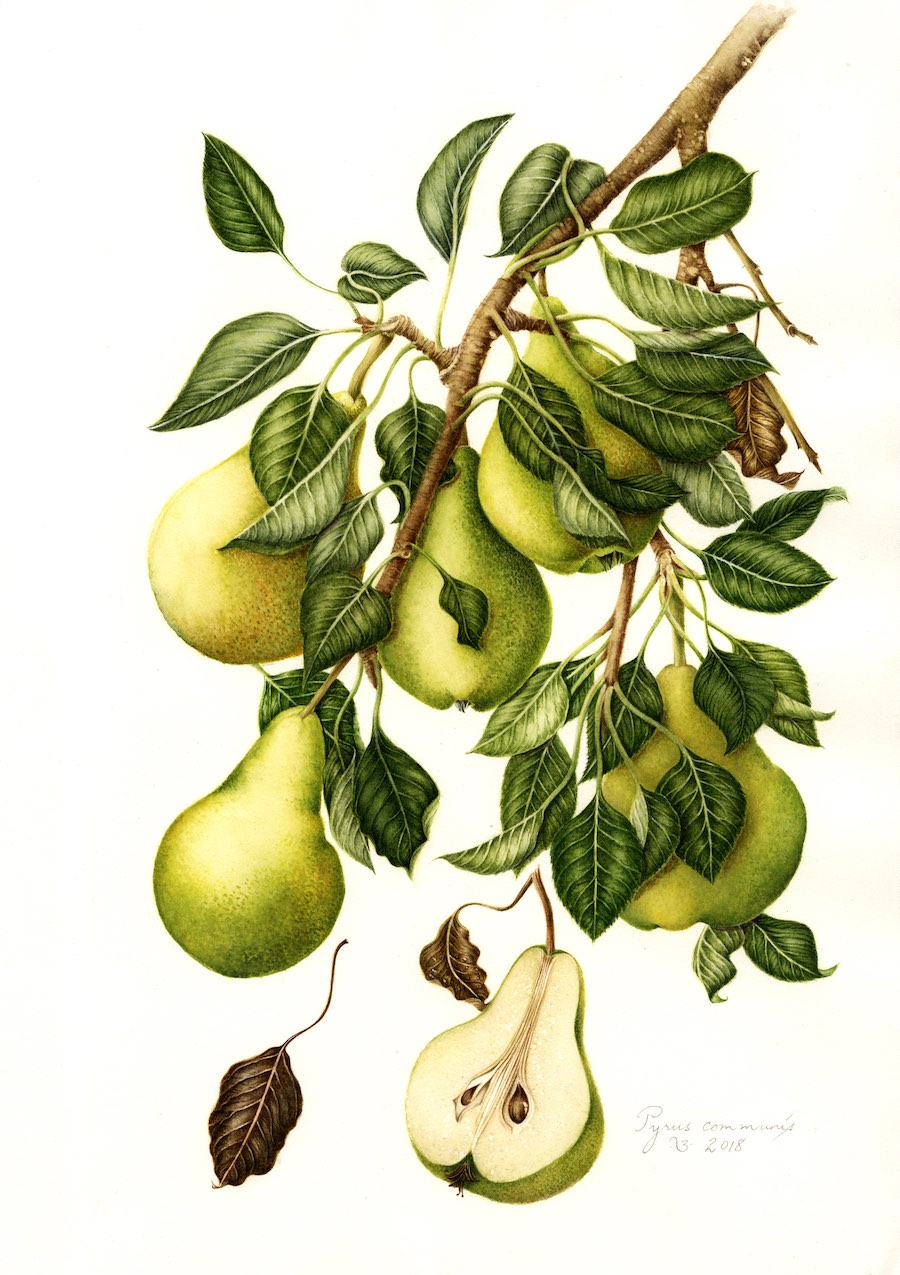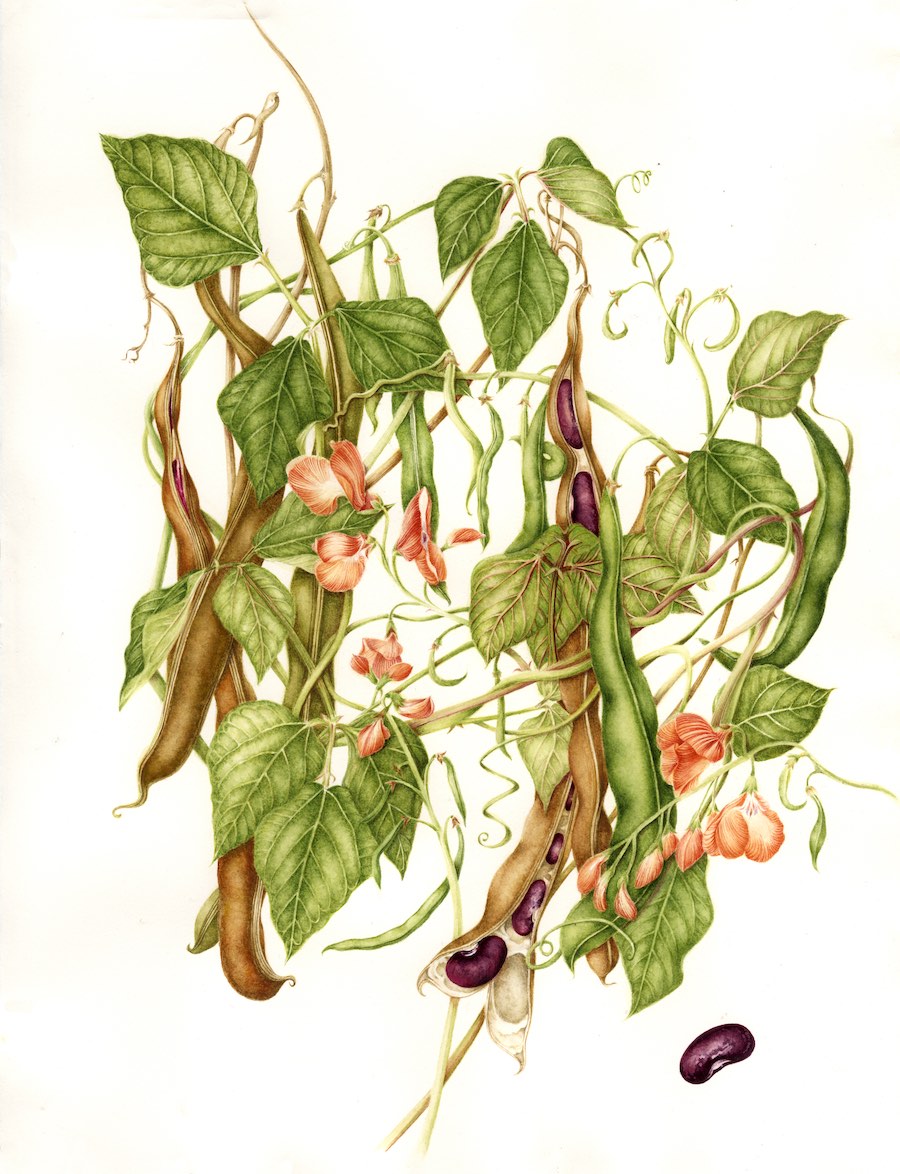The original goal of botanical illustration was not art but precise, accurate and detailed drawings for the express purpose of plant identification, so a specimen could be correctly recognized and distinguished from other species.
Renderings of botanical subjects date back to ancient times with identifiable plants appearing in Egyptian tombs, on Greek vases, in Roman mosaics and Asian temple sculpture. Early herbals and pharmacopoeia of many cultures depict plant portraits (critical in times of limited literacy) to assist in identification of a species, usually for medicinal purposes.
With European voyages of discovery and exploration (resulting later on in colonization of distant lands), botanical illustrations done from life and in the field, often under difficult conditions, led to an increased interest in exotic as well as economically useful plants. Despite modern means of genus & species identification the legacy of the genre with its long and fascinating history, lives on, and I am proud to be a part of it.
As a botanical illustrator I am a conservative traditionalist (!), aiming at complete and accurate documentation of the plant specimen I have chosen to portray. So picture this: a blank sheet of paper beside a robust, thriving botanical specimen. Task at hand: accurate documentation, detailing phases of botanical development while preserving the vitality of the ever-mutable living plant. Approach: a brush dipped in clear water following the direction of growth, then the first faint traces of paint, without preliminary sketches or drawing, entrusting the plant’s natural design to determine composition and communicate its own aesthetic power.
Result: a portrait so precise & exact that you should be able to taste or smell the subject!
milly acharya
